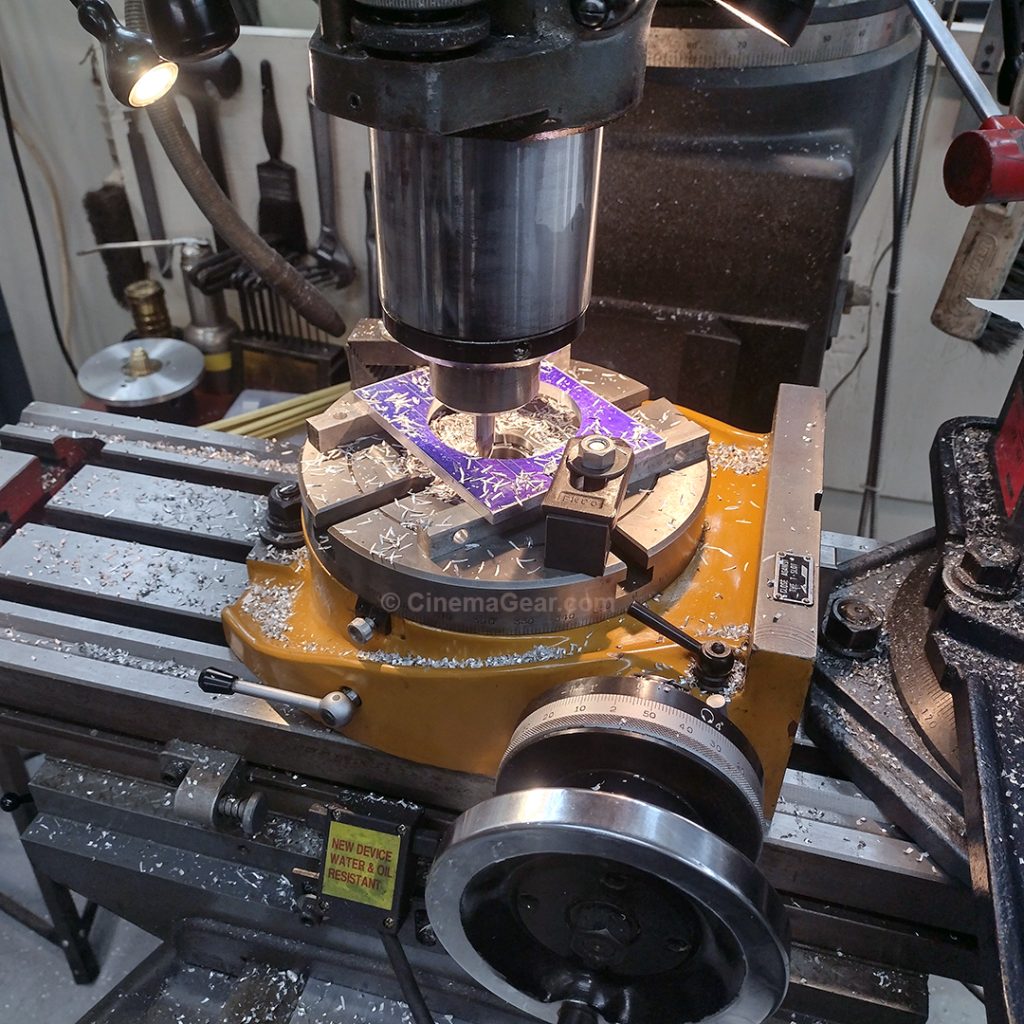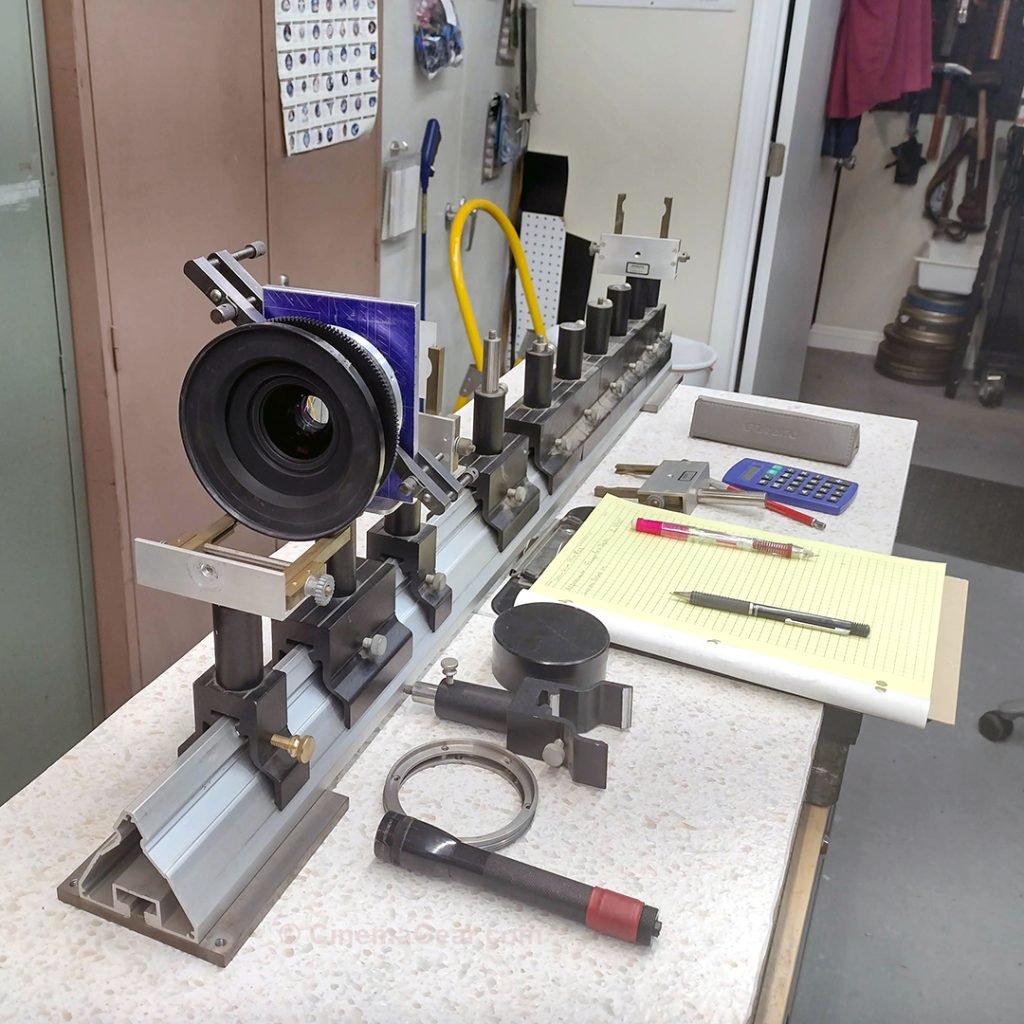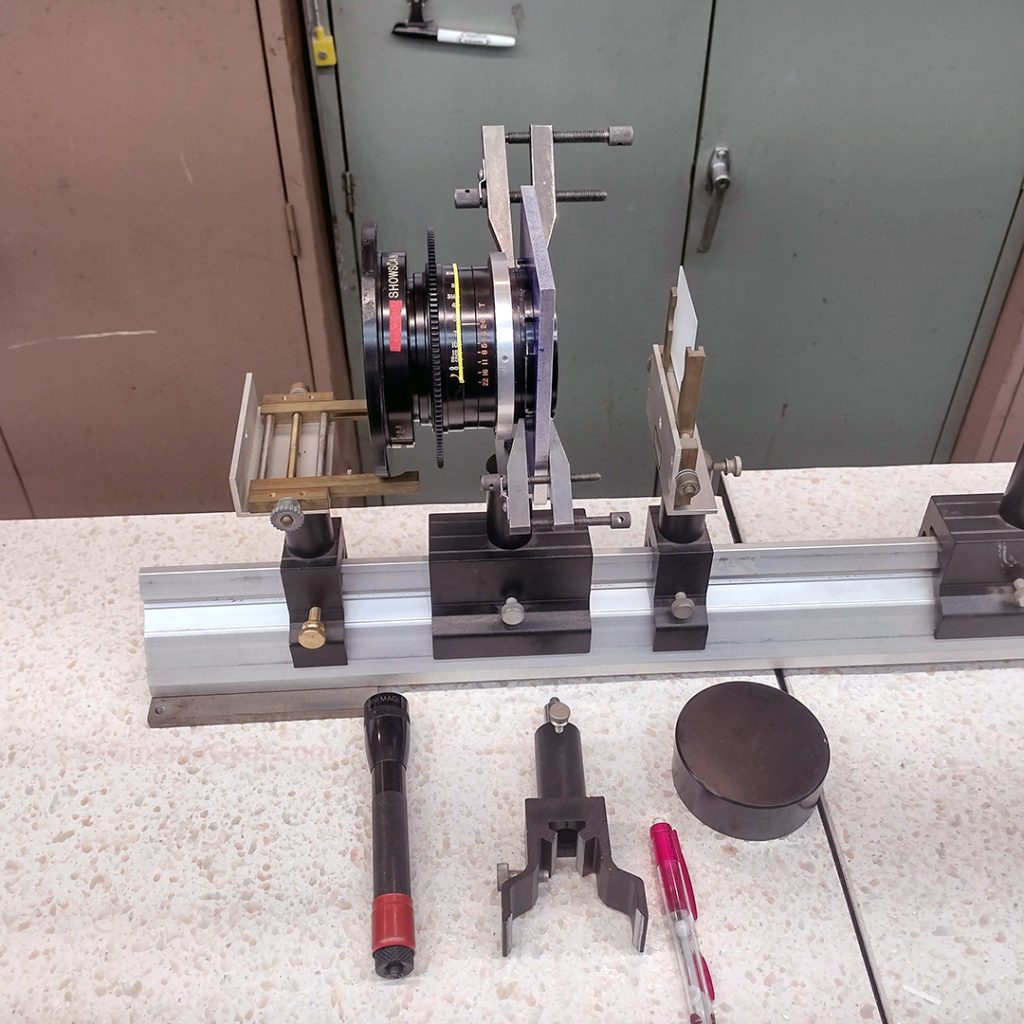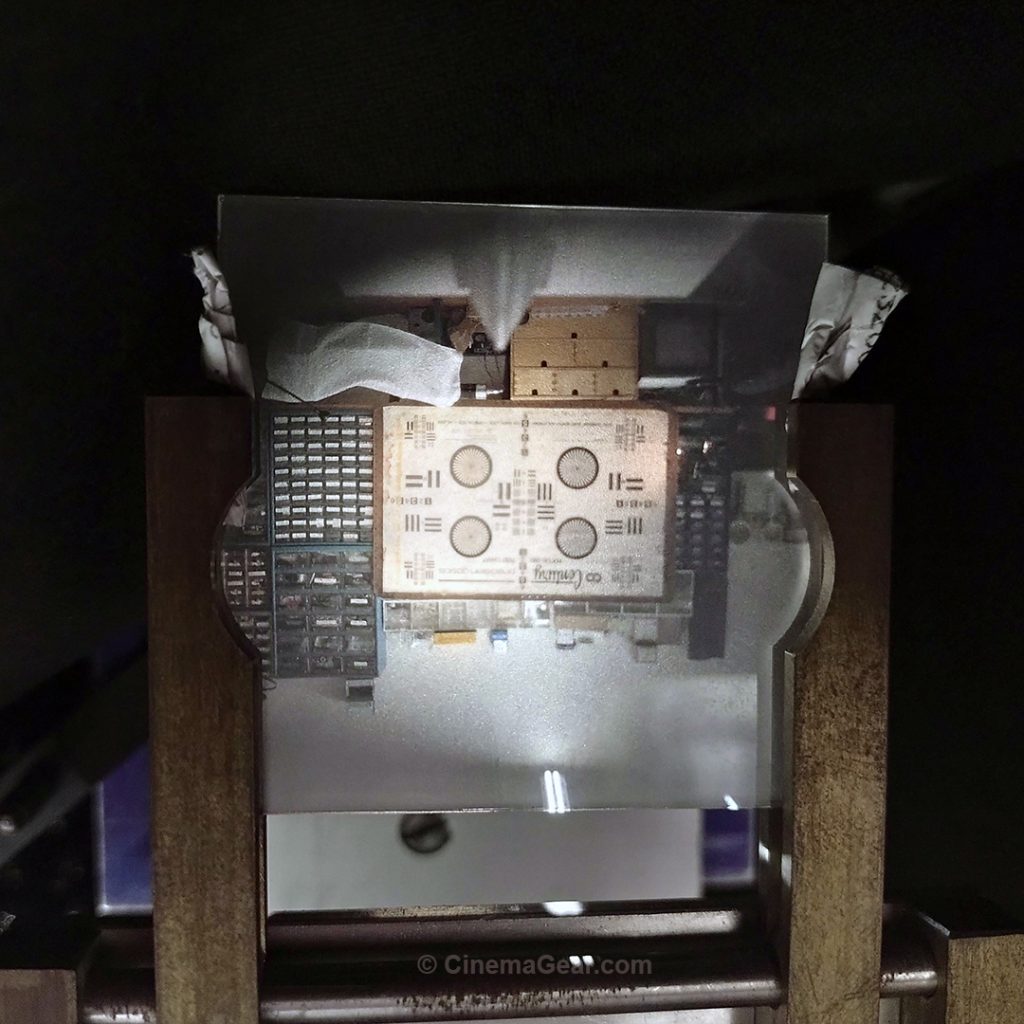I have shown you my recent work repairing the Fries Ultra 70 3×65 IMAX format camera. The owner of this camera doesn’t have lenses that were made specifically for it, but it occurred to me that the lenses that were built for the CP65 Showscan cameras “might” work in this situation. This week I experimented with the few Showscan lenses I have left in my collection of stuff. The idea was to test to see if the image circle from these lenses would cover the 15-perf IMAX format. This is how I went about testing this hypothesis.

Too many years ago to mention, I worked for John Russell, a self-taught and tremendously intuitive and ingenious camera engineer. John and I were busy building 65mm cameras for “Close Encounters of the Third Kind” and several prototype Showscan cameras. I remember that we used mostly Mamiya and Pentax medium format lenses on the cameras we were building. Unfortunately, I didn’t get to keep any of my notes from that period of time so I don’t remember exactly which lenses we found covered the 65mm film format without vignetting. After my work on Showscan was finished, I moved to Universal Hartland and I lost track of the ongoing Showscan camera development. So I don’t know what lenses Cinema Products selected as the ultimate choice for the Showscan cameras and lenses they built.



Some of the experiments John and I did showed that the published frame dimensions that the Pentax and Mamiya lenses would produce were slightly underestimated and the image circle on some of the lenses would actually cover a bigger format with minimal distortion. I was hoping that the image circle my remaining Showscan lenses would produce was just big enough to cover the 15-perf format. Unfortunately, I don’t have any fixtures or collimator mounts that support the Showscan lenses, so I pulled out an old optical rail I bought years ago from Edmund’s Scientific and made a crude lens support and ground glass holder. There were two things I wanted to confirm: First, that the published flange focal depth for the Showscan lenses was similar to the IMAX flange focal depth. And second, could the image circle the Showscan lenses produced cover the IMAX film frame without significant fall-off or dark areas at the four corners of each film frame?


I was able to roughly measure the flange focal distance of the Showscan lenses and that seemed to be consistent with the published information. The second thing I looked at was if I could measure the image circle that the Showscan lenses were producing. Trying to use only tools I had on hand, the largest ground glass I had in stock was only 2 inches by 2 inches. The IMAX film frame is 1.9094 inches by 2.7401 inches. That meant I could see fairly accurately the top and bottom of the image circle, but I couldn’t see the left and right frame lines to see if the lenses would cover the full IMAX image without distortion or fall-off. I stopped at that point to discuss my findings so far with my client and see if they want to pursue this idea further.


